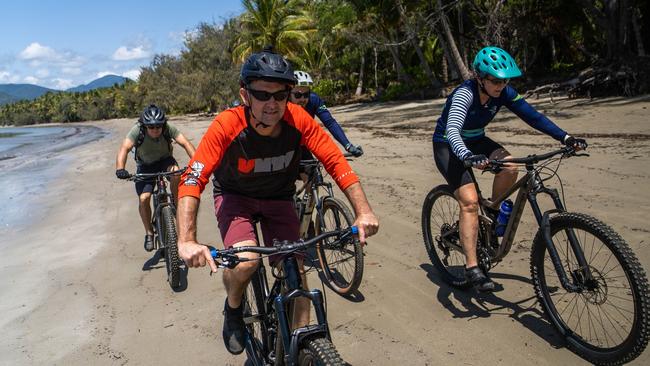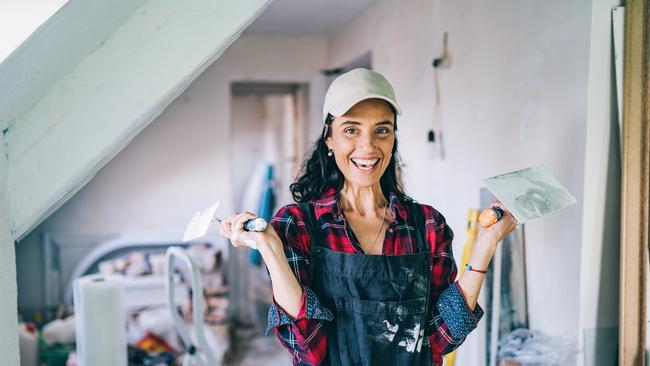More milestones and markers in Australian living: a guide to better understanding your market
We are a nation of 30-year-old managerial Millennials, 44-year-olds busily going to Bunnings and ageing baby boomers that should beware the winter months of potential funerals.

Last month I talked about various milestones which are scattered across the Australian life cycle, according to the census.
On average, most Australians hook up in de facto relationships at the age of 23, get married at 28, earn most (full-time) income at 43, volunteer at 45, get divorced at 46 (for women, 52 for men), provide unpaid care for the elderly (possibly parents) at 57 and enjoy a decade or so of low anxiety in the 60s and 70s.
This perspective generated such interest that I have assembled even more milestones and tossed in some demographic markers for men and women to help explain how Australians live today.
At the time of the most recent census in August 2021 the pandemic lockdowns were still in place in some cities. Indeed, the census recorded 29 per cent of the workforce in Melbourne working from home. In Sydney at this time, the WFH component was 39 per cent.
And judging by continued vacancies in these city’s CBDs, it is evident that many of the pandemic’s work habits, like working from home, are being carried forward two years later.
Working from home
So, who is it that is most predisposed to working from home?
The answer is 39-year-old women and 41-year-old men. These workers are nearing the peak income earning stage of the life cycle (age 43) and yet it is they who most enthusiastically worked from home.
However, this is not surprising because working from home for an extended period requires some level of autonomy in the workplace. It is capitalised upon by those with kids, a house which requires improvement, and an established reputation and client/network base.
All that comes together at ages 39 and 41.
Plus, by the late 30s the average Aussie household generally includes kids and so “not commuting” is regarded as a benefit by both parents.
However, for those workers commuting to a workplace at the time of the census what single-year-of-age cohort is most likely to commute by bike?
Cyclists
Female bike-riding commuters peak at the age of 29, although this mode of transport is popular with women between the ages of 25 and 32.
On the other hand, male commuters will ride a bike to work from the age of 15 (apprentices, I imagine) but this number plummets from age 18 when they can drive a car.
Single females naturally cluster in the inner city, which supports a bike riding culture. Male jobs and especially those offering apprenticeships and including factory workers tend to locate in remote and outer suburbs, thus requiring workers to use a car.
New arrivals
The peak age of recent long-term resident arrivals (includes students) is 29 for women and 30 for men. At this age, Australia’s newest residents are young, fit, healthy and often skilled in jobs that make a productive contribution to the Australian economy.

This cohort is heavily skewed towards female arrivals. The 2021 Census recorded 2900 female recent (past 12 months) arrivals aged 30 as compared with just 2,400 male arrivals. The reason for the difference is that the parents of international students regard Australia as a safe option for young women.
This insight confirms one of the many social dividends of a safe and well-managed society: it attracts young, skilled workers. However, it also suggests that the market for apartment accommodation should include bike racks.
Housework and renovations
Did you know that some (recalcitrant) Australians, when asked if they did unpaid domestic housework – that is, either cooking, cleaning, preparing meals or maintaining a house, garden and/or a motor vehicle – said “no,” they did not do any domestic housework?
Those most likely to have answered “yes” to this question were aged 44 for both men and women.
The doing of unpaid domestic housework diminishes (for both genders) after the age of 44.
I suspect this isn’t because Australians become progressively less houseproud as they age.
It’s more likely that there’s less home development housework – building a garden, undertaking renovations – to be done later in life.
It also means that the peak customer for home improvement retailers such as Bunnings and Mitre 10 is probably aged 44.
Plus, as kids move into the teenage years (typically when parents are in their late 40s) they may be helping to carry the load of cleaning and running a family home.
Business owners
At what time in the life cycle are most Australians most likely to become a business owner/manager? This can be a promotion within a corporate business. It can also mean taking an ownership position in a family business, such as a farm or a shop.
According to the 2021 Census, the greatest increase in owner/managers takes place between the ages of 30 and 31 when this number jumps from 24,856 to 28,129 which is an increase of 3273 over 12 months or about 63 a week. Australia’s entrepreneurial energy is quietly fizzing around Millennials aged 30, 31.
Indeed, Australians probably regard the age of 30 as the stepping-off point to managing a family business.

But there are other equally fascinating peak times which can be extracted from the publications of the Australian Bureau of Statistics.
Best and worst days
For example, did you know that most Australians (on a per-day basis) are born in March (about 27,000 in 2021) just ahead of May (26,000 in 2021)?
Or that Australians are most likely to pass away in either July (18,292) or August (17,722) in 2022; in milder March the equivalent figure is much lower (14,731).
The Australian winter months really do affect the spirit.
The most popular month to be married? That would be March, with 13 per cent of an annual market (of 89,164) in 2022.
A study by the ABS of precise birthdays some years ago using data from a 10-year period (2007-2016) showed that the most popular day on which to be born in Australia is September 17.
Very few Australians are born between Christmas and New Year or on January 1, January 26 (Australia Day) or April 25 (Anzac Day). In order to become Aussies, these new babies need to fit in around our holidays, mate. The least popular day on which to be born in Australia is December 25.
So let’s put all this together.
Fifteen-year-old males get their start in the workforce by riding a bike to work. A decade later, women peak in their bike riding habits, most likely right up to the time they have children.
Denmark’s child-friendly Christiania bikes have yet to get a meaningful foothold within metropolitan Australia.
Nevertheless, the inner city apartment market must include provision for bike racks for often female tenants (maybe former foreign students) who ride their bike to an office destination in the CBD or CBD-fringe in their late 20s and early 30s.
Males also ride a bike to work at this age but in far fewer numbers.
Indeed, males are more inclined to drive to work from the age of 18, perhaps to a logistics centre located in outer suburbia which isn’t as bike friendly as the inner city.
If there are bike racks in logistics centres, it’s probably to accommodate bikes ridden within these cavernous facilities.

Family businesses including farms and shops typically involve 20-somethings as owner/managers just after the age of 30. The key to adulthood may have been the age of 21 traditionally, but to participate in a family business at a management level it’s strictly 30-and-over.
The peak commitment to housework at 44 for men and women (how much each contributes is a question for another time) fits between peak full-time income (at 43) and peak volunteering at 45 (example tuck shop or Auskick duty) and which is followed by peak divorce for women at age 46 (men 52). This is a busy time in the average Aussie life cycle.
But the age-44 housework-peak also points to something else. I don’t think new home buyers want the perfect house packaged and delivered. It’s a bit like those American cake mixes: the manufacturer always leaves something (example frosting/icing) as a consumer task so that the buyer can finesse, tailor and “own” the final product.
Australian households go through an establishment and development phase between the ages of 35 to 45 where a property is improved and curated in preparation for the arrival of primary school kids (hence the volunteering peak at 45) and then the arrival of teenagers (after the divorce) and the beginning of secondary school.
The point of marking milestones is to show the underlying rhythm of everyday life in Australia.
The challenge for business is to harness the demographic forces that deliver more buyers, more customers, for age-specific product over the coming decade.
I quite like the idea of managerial Millennials in their early 30s. And of 44-year-olds busily putting their “frosting” on their McMansions.
As for ageing baby boomers, perhaps beware the late winter (July-August) blues.
Bernard Salt is founder of The Demographics Group; data by Hari Hari Priya Kannan







To join the conversation, please log in. Don't have an account? Register
Join the conversation, you are commenting as Logout